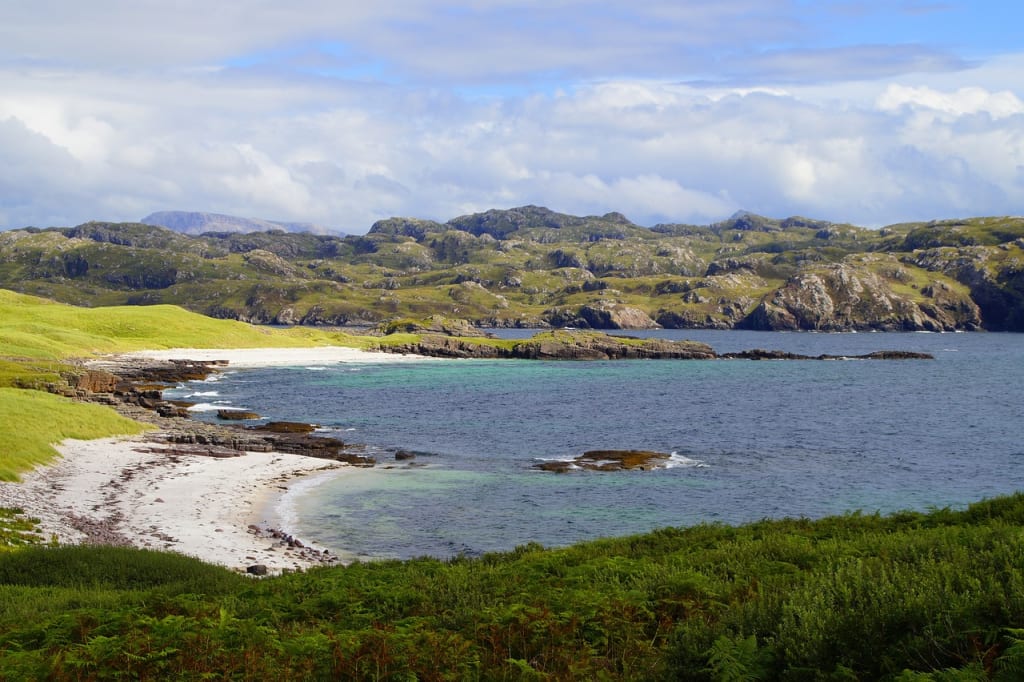Mystical Islands
Unveiling Nature's Wonders

Introduction:
The world's oceans hold a myriad of mysteries, from hidden gemstone islands to transient volcanic formations. Nestled in the mesmerizingly clear waters of the Red Sea, surrounded by a vibrant underwater world, Zabargad, also known as St. John's Island, is a petite island devoid of trees and predominantly composed of paradite. This gemstone, abundant in paradot, earned its moniker "the evening Emerald" due to its radiant green hue. Historical accounts suggest that even Cleopatra, with her extravagant taste in jewelry, may have admired paradot. Geologists posit that paradot originates from the seafloor spreading, where Earth's crust separates, causing rocks from the depths to emerge. Zabargad, our Treasure Island, emerged as the African and Asiatic continental plates collided, pushing lower crust rocks above sea level. Additionally, paradot can also trace its origins to rare meteorite impacts on Earth.
1. Zabargad: The Gemstone Island
Nestled in the Red Sea, Zabargad, or St. John's Island, captivates with its clear waters and vibrant underwater world. Devoid of trees, the island primarily consists of peridot-rich peridotite. Peridot, known as the "evening emerald" for its sparkling green hue, has historical connections, with some believing Cleopatra herself favored it. Geologists attribute peridot formation to the spreading of the sea floor, a result of the African and Asiatic continental plates colliding.
2. Zabargad's Geological Uniqueness
Zabargad stands out geologically as an island built from an uplifted mantle, making it the oldest and longest-known source of peridot globally. Pirates discovered its treasures in 500 BCE, and in the 19th century, British explorers identified it as Pliny the Elder's referenced island. Though mining activities occurred in the 20th century, today, Zabargad is part of the Elba National Park system, drawing visitors for both its underwater beauty and sparkling peridot gems.
3. Christmas Island's Red Crab Migration
Christmas Island, Australia, hosts a unique spectacle during the wet season. Red crabs, numbering over 100 million, embark on a mass migration to the Indian Ocean for a crucial phase in their life cycle. During this period, the island is covered by a sea of red crabs, creating a stunning natural phenomenon. Authorities close roads during this migration to protect these creatures, showcasing the harmonious interaction between nature and conservation efforts.
4. Japan's Newest Landmass
In November 2023, Japan witnessed the birth of a new island, formed by volcanic eruptions. Just over 300 feet in diameter, the island is made of pumice and tuff left by an underwater volcano. While the volcanic activity has subsided, erosion threatens the island's stability. Similar islands in the past have vanished once volcanic activity ceased, highlighting the ephemeral nature of these geological phenomena.
5. Lake Titicaca's Floating Islands
The Uros people living near Lake Titicaca, Peru, crafted ingenious floating islands from totora roots and reeds more than 500 years ago. Initially a defensive strategy against the Incas, these islands now house over a thousand people. Maintaining their floating homes requires regular replacement of decaying totora, achieved with eucalyptus rods as anchors. The islands boast sustainable living, with residents utilizing solar panels for electricity and engaging in tourism.
6. High Brazil: The Phantom Island
Off the coast of Ireland lies the mysterious High Brazil, a phantom island first mapped in 1325. Legends tell of its appearance once every seven years, with claims of sailors passing through it without making contact. Captain John Nisbet even recounted an encounter with the island in the 15th century, describing a castle and a feast with an ancient grave gentleman. Despite multiple expeditions in the late 15th century, High Brazil vanished from maps in 1865, leaving behind a beautiful, enigmatic story.
Conclusion:
From the emerald shores of Zabargad to the mist-shrouded realms of High Brazil, the world's islands weave tales of beauty, resilience, and mystery. Whether born from geological upheaval or the depths of imagination, these islands beckon explorers to uncover their secrets and embrace the wonder of the unknown.
About the Creator
Peter Kiruu
I Am very passionate about telling great stories, a Fine Artist, Poet and an Author.






Comments
There are no comments for this story
Be the first to respond and start the conversation.